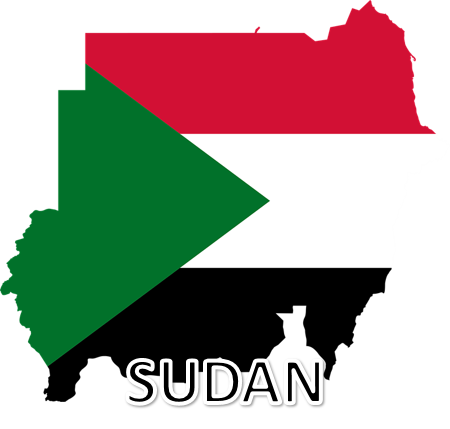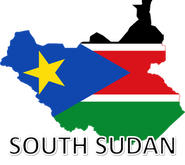|
A series of co-ordinated military assaults launched by the Sudan Peoples Liberation Army (SPLA) in March has succeeded in capturing 24 garrison towns previously held by the National Islamic Front (NIF) government forces. The spectacularly swift offensive swept all opposition aside and killed, wounded or captured a total of 16 000 enemy soldiers. By the end of March the strategic towns of Kaya, Yei, Lainya and Kajokeji had been captured by the victorious SPLA forces. The entire border with Uganda is now effectively under SPLA control (as is the Zaire, Kenyan and Ethiopian borders with Sudan). The SPLA’s dramatic new offensive has, therefore, broken the stranglehold of the NIF blockade on Western Equatoria and opened the road for relief supplies to be driven through Uganda into Western Equatoria. The SPLA is now also able to link its liberated territories in Eastern Equatoria to Western Equatoria and onto Bahr El Ghazal. The SPLA offensive began at the end of the dry season, in March, with co-ordinated attacks on Government of Sudan (GOS) garrisons between Kaya (on the Ugandan border) and Yei (the heart of the agricultural belt) in central Equatoria. Just four days later, by 12 March, the SPLA had routed the GOS forces and captured seven GOS garrisons (at Kaya, Bazi, Morobo, Gumini, Limbe, Loka and Yei).
The scale and ferociousness of the SPLA offensive clearly took the NIF regime by surprise. Five days into the offensive and three days after the capture of Yei, the GOS was persisting in promoting the propaganda that they were warding off an invasion by “Ugandan troops” at Kaya, but no mention had been made of the SPLA offensive. The GOS vigorously denied that the strategic town of Yei had been captured. The garrison town of Yei was considered so important by the GOS that it was reputed to have had an even larger defensive force than the Southern capital of Juba. The refusal by the NIF regime to acknowledge that they had lost Yei led to another catastrophic defeat for the GOS. The fleeing GOS garrison from Morobo was informed by radio that Yei was secure and that they needed to break through the SPLA siege of the town. Nearly one thousand GOS troops were killed and a further thousand were taken prisoner by the SPLA in an intensely fierce battle south of Yei as the fleeing GOS force tried desperately to fight their way through to the Yei garrison which no longer existed. The SPLA captured a vast quantity of equipment from the GOS forces. Seventeen tanks were captured intact at Yei along with an anti-aircraft battery. An Antonov bomber which was sent to bomb Yei was later shot down by this AA battery. The high flying Antonov exploded in mid air. When finally the GOS admitted that they had “lost radio contact” with their garrison in Yei, the NIF leader, Lt. Gen Omar Hassan Ahmad Al Bashir, sought to draw attention away from their humiliating defeat at Yei by claiming that Lainya was his chosen line of defence for Juba. Lainya was so heavily fortified that Gen. Al-Bashir even issued a public challenge on TV and radio daring the SPLA to try to take Lainya. However, as he left the TV studios, Al-Bashir was informed that Lainya had already fallen to the SPLA. Lainya had fallen after only a 5 hour battle! The visibly shaken dictator then ordered that all remaining garrisons outside Juba should withdraw into the town itself for the defence of the Southern capital and its air base. The effect of the news of the unbroken series of SPLA victories was devastating upon the GOS garrisons. As the last remaining garrison town of Kajokeji was surrounded, GOS troops began to desert in large numbers. When the GOS garrison began its retreat to Juba, it was ambushed and captured along with all their weapons, supplies and equipment. Predictably, the GOS continued to try to cover up yet another catastrophic defeat with another tissue of lies. The official statement from Khartoum claimed that their “tactical withdrawal” from Kajokeji was successful and all had reached Juba safely. The fall of Kajokeji on 24 March brought to 19 the number of GOS garrisons captured by the SPLA in Central Equatoria since 9 March. In less than three weeks, the entire military situation had shifted. Now it was not the SPLA controlled Western Equatoria which was being besieged, but the GOS controlled Southern capital of Juba! At the time of writing this report, the SPLA forces were a mere 40 kilometres from Juba and a wave of panic was sweeping through Juba. Morale amongst the GOS troops hit an all time low. Reportedly, many GOS troops simply threw down their weapons and ran or surrendered at the beginning of any firefight. To compensate for their crushing losses in Equatoria, the GOS mobilised a massive mechanised column in the Upper Nile to capture Maban and Shali on 15 March. To celebrate this victory, the NIF regime announced that a million men would march on the streets of Khartoum to celebrate this great victory. Interestingly, when the SPLA had initially captured Maban two months previously, the GOS radio had informed the public that no such garrison post existed and Maban was merely the name of one of the small tribes living in Upper Nile. By March 15, it had been officially converted into a strategically important town. The mass demonstration in Khartoum, however, failed to materialise. In fact, the GOS consolation in taking Maban and Shali proved to be rather embarrassingly short lived. On 19 March the SPLA retook both of the towns, captured the garrisons and seized all of the equipment and supplies which had been brought in by the GOS forces. The Commander in Chief of the SPLA, Dr John Garang, reportedly observed that the NIF regime had now taken upon itself the task of re-supplying the SPLA. Another leader quipped that Al-Bashir was now acting as quartermaster-general for the SPLA! Presumably now that the GOS have once again lost Maban, it will be returned to its previous inconsequential status. By the end of March, over 16 000 GOS soldiers had been either killed, wounded or captured and Amadi, Lui, Lazoti and Jambo had also been captured by the SPLA. The strategic equilibrium in this war between the Muslim Arab North and the mainly Christian Black South had dramatically changed with the initiative having been decisively seized by the SPLA. “In that time a present will be brought to the Lord of hosts from a people tall and smooth of skin, and from a people terrible from their beginning onward, a nation powerful and treading down, whose land the rivers divide . . .” Isaiah 18:7
0 Comments
Leave a Reply. |
More Articles
All
Archives
February 2021
|
"And Jesus came and spoke to them, saying, “All authority has been given to Me in heaven and on earth.
Go therefore and make disciples of all the nations, baptizing them in the name of the Father and of the Son and of the Holy Spirit,
teaching them to observe all things that I have commanded you; and lo, I am with you always, even to the end of the age.” Amen.” Matthew 28: 18-20
Go therefore and make disciples of all the nations, baptizing them in the name of the Father and of the Son and of the Holy Spirit,
teaching them to observe all things that I have commanded you; and lo, I am with you always, even to the end of the age.” Amen.” Matthew 28: 18-20
|
P.O.Box 74 Newlands 7725
Cape Town South Africa |
|



 RSS Feed
RSS Feed
